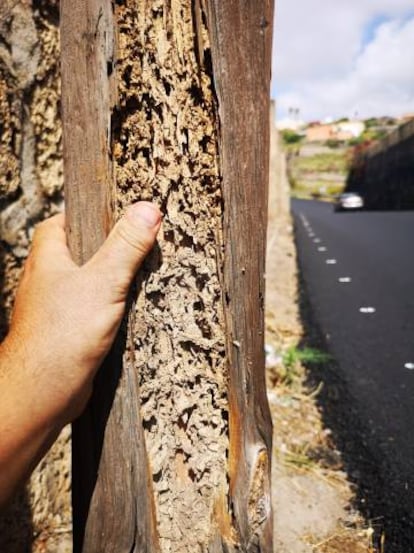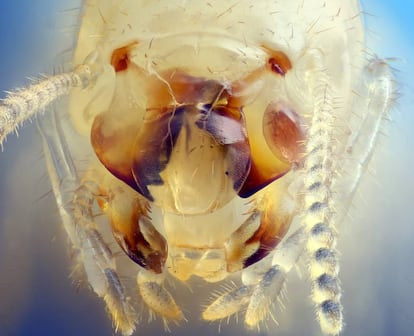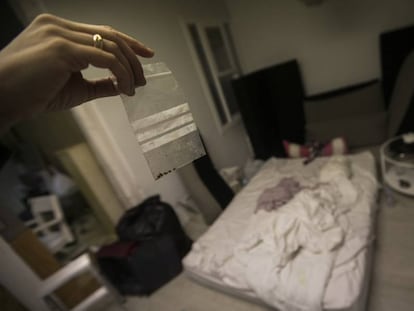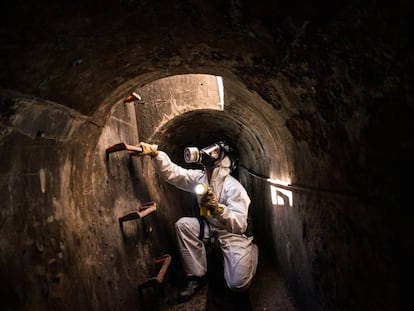Invasive termite species wreaks havoc in Tenerife
The insect, which thrives on the Canary Island’s high temperatures has spread to three municipalities, including San Cristóbal de La Laguna, which is a World Heritage Site

At night, Ana Valladares can hear termites scuttling around her home in Tacoronte, a municipality on Spain’s largest Canary Island Tenerife. She keeps a box of sedatives in her kitchen to help her cope with the stress. “I am under medical supervision. I’ve had multiple panic attacks and my stress levels are through the roof,” she explains. The plague of invasive termites has spread to two other municipalities on the island, even though the alarm was raised back in 2017.

Originating from the United States, the eastern subterranean termite, known by its scientific name Reticulitermes flavipes, is an invasive species that feeds on wood cellulose, plants and books. They can destroy homes and controlling and repairing the damage they cause can cost million of euros a year. According to a study published in Nature Communications, an open access scientific journal, a dozen invasive termite species caused losses of around €240 billion around the world.
Termite mounds, which are created with mud and excrement, can extend up to a kilometer in length and its colonies can hold millions of termites. The pest has also spread to other European countries like France and Italy, affecting cities like Paris and Florence. But in Tenerife, due to the island’s constant high temperatures and humidity levels, the insects can thrive throughout the year. “They can live in temperatures ranging from 4 to 35 degrees Celsius, which covers almost all the island,” says David Hernández, a biologist and researcher at La Laguna University in Tenerife.
The root of the problem
No one really knows how the species arrived in Tenerife, but in 2010 a colony was eliminated from a residential development in Tacoronte. Many residents in the area did not want to talk about the problem out of fear that their property values would drop. In 2017, Anticimex, a pest control service, discovered a new outbreak in the same area.
According to a recent study by Hernández, the termites have spread to the municipalities of San Cristóbal de La Laguna, a World Heritage Site which borders Tacoronte, and to Arona, which are within 60 kilometers of the initial outbreak. “If they’ve been able to reach such distances, then they could be anywhere,” he says. Hernández warns that the insects could reach Taroconte’s and La Laguna’s historic quarters, which are home to local plant nurseries and houses of cultural value.

Not much has been done since 2017 despite the warnings. “It was concentrated in one residential development and was the responsibility of the municipal authorities. The City Hall should have acted more strongly,” says José Antonio Balbuena, from the Socialist Party (PSOE), the environment minister of the Tenerife island council. “We summoned the council and the regional government and it was agreed that they would form a commission to study and present a solution to the issue,” says Álvaro Dávila, the mayor of Tacoronte who is part of the Canarian Coalition, a Canarian nationalist party. “From this meeting, it was understood that multiple municipalities had been affected.”
This is happening because there isn’t enough control of the goods, seeds and animals that enter the island Sí Se Puede spokesperson Esteban Lorenzo
Although there still isn’t an official report on the spread of the plague or the damages it has caused, the Tenerife island council and the regional Canary Island government are preparing a plan to completely eradicate the species from the island within 10 years. The proposed budget is €5 million, but the regional government believes it could cost up to €10 million in only four years. The island council expects the plan to be put into action after summer. Taroconte City Hall has just bought 100 insecticide devices for the most affected areas and will approve a €200,000 subsidy package next month which will allow individuals to receive extermination treatments for around €3,000. To treat a standard home, 20 to 30 insecticide devices are needed.
The socio-political organization Sí Se Puede (Yes You Can) believes a state of emergency needs to be declared on the island. “The administrations are blaming one another. What we ask of them is institutional coordination, protocols, and action plans to stop this problem from spreading,” explains Esteban Lorenzo, the group’s spokesperson. “This is happening because there isn’t enough control at ports and airports of the goods, seeds and animals that enter the island.”
The risks
“It’s a very dangerous species that needs to be dealt with as soon as possible, wherever there are outbreaks on the island, both in private and public areas,” says Hernández who is working with the City Hall. “We believe that it can be eradicated. But, if we don’t succeed, we will have to constantly invest in controlling it and avoiding further economic damage.”

There are similar cases on the Spanish peninsula, where two kinds of subterranean termites, the Reticulitermes grassei and Reticulitermes banyulensis, are present. Although they don’t usually attack plants and the weather isn’t as favorable to them, they have still caused problems. In 2008, the regional government of Andalusia gave local authorities in Benamejí (Córdoba) a €522,000-grant to exterminate the Reticulitermes grassei from its historic quarter.
In the meantime, Jesús, Ana’s son, pours bleach on the crumbling door frame of their home in an effort to keep the termites at bay. He refuses to pay for an exterminator. “This is a result of City Hall’s inaction,” he says. Despite the problem, Ana cannot leave her house. “Where would we go? We are humble workers.”
English version by Asia London Palomba.
Tu suscripción se está usando en otro dispositivo
¿Quieres añadir otro usuario a tu suscripción?
Si continúas leyendo en este dispositivo, no se podrá leer en el otro.
FlechaTu suscripción se está usando en otro dispositivo y solo puedes acceder a EL PAÍS desde un dispositivo a la vez.
Si quieres compartir tu cuenta, cambia tu suscripción a la modalidad Premium, así podrás añadir otro usuario. Cada uno accederá con su propia cuenta de email, lo que os permitirá personalizar vuestra experiencia en EL PAÍS.
¿Tienes una suscripción de empresa? Accede aquí para contratar más cuentas.
En el caso de no saber quién está usando tu cuenta, te recomendamos cambiar tu contraseña aquí.
Si decides continuar compartiendo tu cuenta, este mensaje se mostrará en tu dispositivo y en el de la otra persona que está usando tu cuenta de forma indefinida, afectando a tu experiencia de lectura. Puedes consultar aquí los términos y condiciones de la suscripción digital.
More information
Archived In
Últimas noticias
The complicated life of Francesca Albanese: A rising figure in Italy but barred from every bank by Trump’s sanctions
Half of Scotland is in the hands of 420 property owners
Reinhard Genzel, Nobel laureate in physics: ‘One-minute videos will never give you the truth’
Pinochet’s victims grapple with José Antonio Kast’s rise in Chile
Most viewed
- Pablo Escobar’s hippos: A serious environmental problem, 40 years on
- Why we lost the habit of sleeping in two segments and how that changed our sense of time
- Charles Dubouloz, mountaineering star, retires at 36 with a farewell tour inspired by Walter Bonatti
- Trump’s obsession with putting his name on everything is unprecedented in the United States
- The Florida Keys tourist paradise is besieged by immigration agents: ‘We’ve never seen anything like this’










































